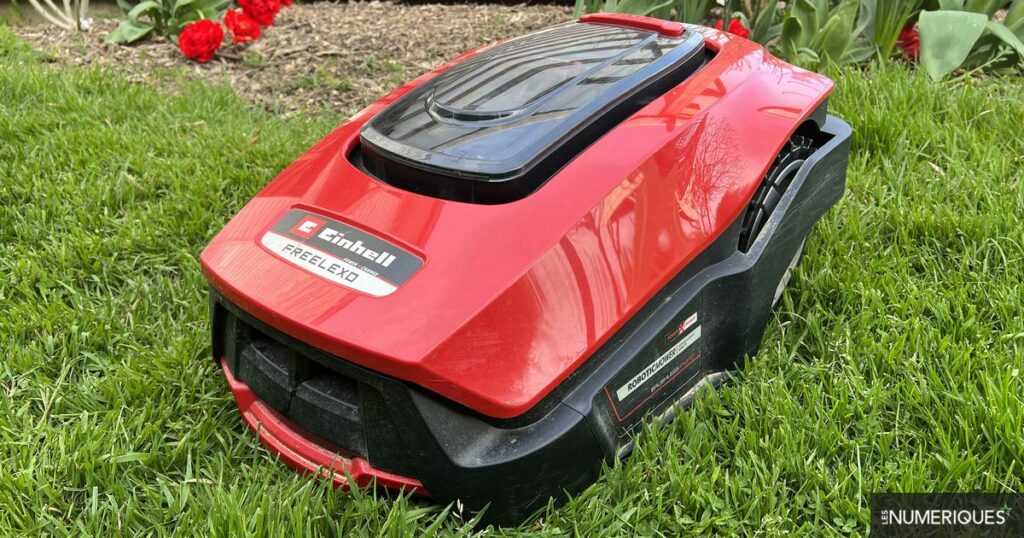As connected as it is, the Freelexo 1200 LCD BT robot mower nevertheless retains a basic operating mode, moving randomly on the lawn and changing direction when it encounters an obstacle. The method may seem archaic, especially when compared to the intelligent movements of robot vacuums, but it has been proven and corresponds well to a mower.
In fact, the risk of seeing traces appear on the lawn is reduced. And from experience, we can say that this does not prevent the robotic lawnmower from covering the entire surface. Simply, it takes more time, which is less disturbing insofar as its operating noise is low and you don’t normally spend as much time on your lawn as in your home. That being said, we can obviously stop the mower at any time, as long as it can mow long enough during our absence.
Such a robot is also designed to mow every day to ensure an even result, with no visible difference in grass height from one part of the lawn to another. Although we remain convinced that the future of robotic mowers also lies in smarter methodical navigation – if only for the sake of saving energy – it is clear that a random mowing mode can ensure good results.
The robot still has to be cunning enough to get out of complicated situations: cramped areas, narrow passages, hollows and bumps are all traps that only well-designed algorithms can manage effectively so as not to end up with a mower constantly blocked or spending too much time in certain areas. In the present case, this is precisely what is wrong with this Freelexo which has repeatedly found itself caught in a trap on our land. The posts of the children’s cabin are certainly tricky, but most of the robot mowers passed on our test ground manage to get out of them.
Similarly, due to a very low bumper that catches the slightest clump of grass that is a little too dense or stumbles if the mower rolls into a hollow, many mowing interruptions occur. The Freelexo then stops mowing, moves backwards, forwards again or changes direction, sometimes persisting until it stops, even though the lawn has already been mowed to a height of less than 50 mm. Adjusting its cutting height to the maximum (60 mm) does not change anything. Annoying, because it requires a little work to fill holes or cut more severely around areas that are not necessarily disturbing.
Note also that the edge mowing option does not solve this problem in any way since the robot mower tends to cling to the grass that has just grown along the edges, and is limited by the position center of its cutting disc which inevitably leaves a good unmown width on the periphery. Fortunately, when it returns to its base to recharge, the Freelexo runs along the left of the perimeter wire (inner side of the lawn, therefore), limiting the risk of immobilization with an empty battery.
This robot mower is too sensitive and we would have liked it to be more autonomous. Regrettable, because it otherwise ensures a work of good quality thanks to its small very sharp blades. Its cutting width of 18 cm is not very large, however, and it is better not to have 1200 m² to pamper if you do not want the mower to work day and night. However, the Freelexo offers a good operating time/charging ratio, ensuring approximately 2 h 30 min of mowing for a calculated charge of 1 h 45 min.
Its consumption remains reasonable at 0.07 kWh per charge cycle. If it is used to the maximum of its capacities, it can thus ensure 5.6 mowing cycles per 24 hours. Reduced to five complete cycles, this gives us a consumption of 0.35 kWh/day. Added to this is the consumption of the base, measured at 2 W when the mower is working (i.e. 0.025 kWh for five cycles) or is waiting on its base once charged. Over a period from March to October (275 days), we calculate a total consumption of 103 kWh, or some €18/year (tariff of €17.40/kWh) for the Freelexo 1200 LCD BT.

